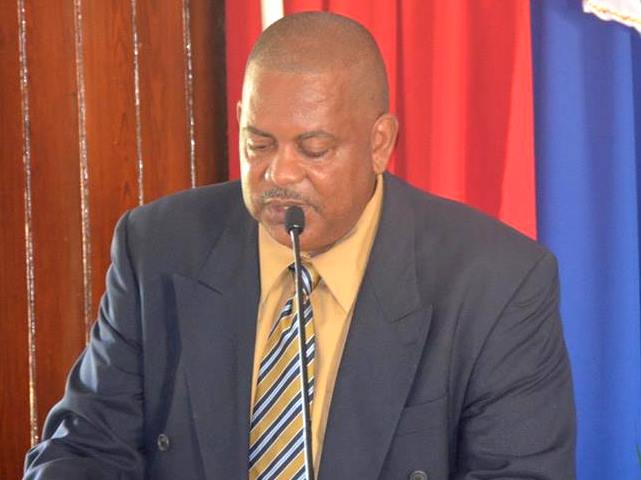I am pleased to have had the opportunity to present the white paper “On the Road to Autonomy” and the draft constitutional framework “Elements of a draft constitution” to the Island Council last week Tuesday.
First of all, I wish to thank all those who have contributed to these two historic documents being prepared. I want to particularly single out the local Constitutional Committee, Dr. Carlyle G. Corbin, Mr. Denicio Brison, and others for their continued hard work and advice.
Having these documents debated and ratified by the Island Council today is the first important step towards attaining the island’s rightful constitutional status, in line with the wishes of the population.
The white paper basically:
· Examines the desire of the people of Sint Eustatius to achieve an autonomous political status within the Kingdom of the Netherlands.
· Draws attention to the fact that Statians have systematically formally expressed their preference over the years, but instead were given the status of partial integration when the Netherlands Antilles was dismantled in 2010.
· Clarifies that the financing of the autonomous arrangement can and will take place within the normal budgetary process of Sint Eustatius (BDO study).
· Emphasizes the importance of self-determination within the Dutch and international context.
· Concludes with an examination of the unusual circumstances surrounding the removal of the Netherlands Antilles from the UN list of NSGT’s, short and medium-term actions towards Sint Eustatius’ re-inscription on the UN list of NSGT’s, and a clear plan to increase regional awareness of the right of Sint Eustatius to genuine self-determination.
Constitutional framework:
The “Elements of a Draft Constitution” for Sint Eustatius was prepared to reflect the transition from the “public entity” status to an autonomous country within the Kingdom, consistent with the results of the 2005 political status referendum in which the electorate voted for a restructured autonomous arrangement, and the subsequent 2014 political status referendum in which they similarly selected the status of “Autonomy within the Dutch Kingdom.”
In giving effect to the referendum results of both referenda, the present Elements” document has been written consistent with the constitutional arrangements presently in place in the other autonomous countries within the Kingdom, in particular Aruba, Curacao and Sint Maarten. There are also specific differences reflected owing to Sint Eustatius’s differential in population size with the other autonomous countries, the accompanying capacity building requirements, and the interest in achieving a genuine autonomous governance model free of democratic deficit.
The “Elements of a Draft Constitution” seeks to integrate the recommendations of the White Paper “On the Road to Autonomy” which sets forth specific aspects of an autonomous association that comply with international law and principles, in particular the minimum standards of the United Nations (U.N.) Charter, relevant resolutions of the U.N. General Assembly, and the self-determination aspects of the core human rights conventions. Of particular relevance are the minimum standards for full self-government under autonomy contained in Resolution 1541 (XV).
Accordingly, the “Elements of a Draft Constitution ” is reflective of an arrangement which would place an autonomous country of Sint Eustatius as part of the Kingdom of the Netherlands with the retention of Dutch Nationality in the same manner of the Caribbean partners of the Kingdom, with a Sint Eustatius citizenship, and a constitution of its own making with a unique government structure. The constitution would provide for the full exercise of executive and legislative authority over its internal affairs while providing ample space for relevant technical assistance, in particular that required in the building of capacity.
The “Elements of a Draft Constitution” also provides for the requisite transition to Sint Eustatius of those powers currently exercised by the Kingdom, and formally exercised by the autonomous country of the Netherlands Antilles of which Saint Eustatius was a part until 2010. Additional features of the “Elements of a draft Constitution” include a dispute mechanism, an adjusted role for the Governor, and an Audit Chamber as a financial supervisory mechanism similar to the other autonomous countries in the Kingdom.
In line with the agreements with the Dutch Government to have dialogue, including a round table meeting, I will be having meetings in the Netherlands in the week of April 17th. During my visit, I will provide the Dutch Government representatives with the documents approved today. I will also seek to receive a response to the letter sent to Prime Minister Mark Rutte formally protesting the embedding of Sint Eustatius in the Dutch constitution.
Also, my delegation will meet with other Dutch ministries in order to discuss their involvement with executing the economic development plan and the capacity building required to achieve an autonomous status.
The process moving forward will include local and regional engagement and dialogue, education of the population regarding the constitutional process, implementation of the economic development plan.
Besides those actions, it is always important that the government makes sure that continued improvements to the current functioning are being made, so that the organization is prepared for the future status.
Derrick Simmons Jr.
Commissioner of Constitutional Affairs































